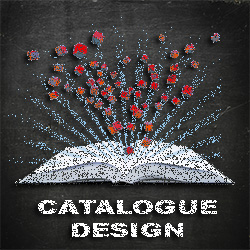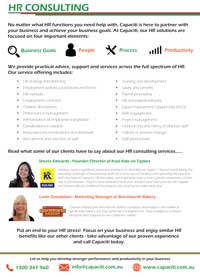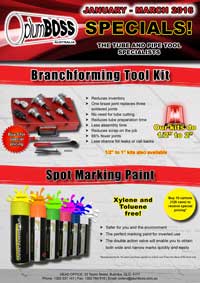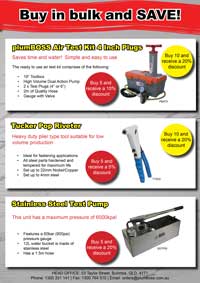Traditional Marketing Services
Services
Professional Catalogue design
How much does professional catalogue design cost?
When we design a catalogue we normally charge a flat rate per page. This includes design and layout of the catalogue, some typical image file editing and creating files for printing. It is all inclusive and there are no additional charges or limitations unless you request extra services. You provide all copy and digital photo files. If you don’t have images for all your products DLM Marketing can organise a professional product photographer for you.
Standard catalogue pricing
Our standard page rate starts from $60.00+gst per page. Please don’t hesitate to contact us for more information or to obtain a detailed quote.
| Number of pages | Price per page |
|---|---|
| 4 – 8 | $135.00 + gst |
| 12 – 16 | $120.00 + gst |
| 20 – 24 | $105.00 + gst |
| 28 – 32 | $90.00 + gst |
| 36 – 40 | $70.00 + gst |
| 44+ | $60.00 + gst |
PLEASE NOTE: Printing costs are extra
How we work?
DLM Marketing prefers to design clients catalogues from scratch adhering to your companies branding style; we do not work from pre-made templates. We interview you about your target market, industry, competition and style needs and build a design best suited for you. We’ll help guide you in preparing your content to keep your costs down as well. We want a long-term relationship with our clients so making catalogues effective and ideally designed is a top priority.
How long does it take?
Most catalogue design projects – catalogues of 32 to 64 pages – generally need about 4-6 weeks to design and proof. You’ll be very involved in approving both the style and layout along the way and we need to leave enough time to interact properly. Smaller catalogues might require less time, about 2-4 weeks. Printing usually needs another 7-10 working days as well. We can work with any printer of your choosing and can help you choose just the right printer for your specific project at no extra cost.
How do we get started?
Call us or contact us by email. We’ll discuss your project, answer your questions, send you samples if you’d like and determine if we’re a good fit. If so, we’ll ask for a deposit, some signed paperwork and your content – copy, product samples and/or images and we’ll begin production on your catalogue design.
Contact us
Error: Contact form not found.
Rules of good catalogue design
1) Appeal to lifestyle desires
Appeal to what makes a person buy
Sometimes people buy to fill a need but most of the time people buy because of want. They buy something they want because they envision feeling better, more satisfied after they have exchanged their hard-earned money for the product or service you have to sell. The art of creating the desire to buy is appealing to the customer’s desire to attain a particular lifestyle. Show the customer the lifestyle they can attain and desire and you will sell more product.
2) Professional catalogue designed for your target market
Tailor your catalogue design to appeal to your audience. A business-to-business catalogue (B2B) should be very different than a business-to-consumer (B2C) catalogue. Catalogues for young people will have a different look than a catalogue for older people.
3) Make the product the centerpiece
Professional product photography
A rule of thumb in catalogue design is the larger the product photo the greater the product’s sales. To this end we generally strive to maximize the size of the product’s image, especially in conjunction with each product’s profit value – the more total profit a product generates the larger the product photo should be. Then support the product with compelling copy.
Some catalogue companies attempt to save money on photography and printing by grouping items together in photographs. This often results in poor sales because in such a photo no product stands out to draw the customer in. It is better to show items
individually or in very small, related groups. We prefer to show most products with no background and with a subtle drop shadow. This allows the product to stand out from the clutter of the page. Then we add lifestyle shots with a subtle background to add variety to the design and convey lifestyle moods.
4) Use great product photos
The Pitfalls of Scrimping on Product Photos
Creating a catalogue is expensive and we all want to cut costs when possible. However perhaps the single most important catalogue element – the product photo – tends to be the place where clients cut first and it hurts their success every time.
Supplier supplied images
In some industries and with some vendors you can get excellent photos of their products for use in your catalogue. However most supplier images are just not that good in the first place. Almost all lack clipping paths requiring labour and expense at the catalogue design side to use them well. This reduces the perceived savings of these free images. Plus your catalogue will not have a unique look all your own.
Web images
About half of our new customers typically began life as a web-based company and the images they’ve produced so far are low resolution web images. Other times the images received from our clients are web resolution images. These images are not acceptable for print catalogues! They are less than 1/4 the resolution and have no clipping paths. If you use them your products will be blurry, the design will suffer and so will your sales.
Shooting your own images
The third way clients hope to save money is by taking their own photos. The physical process of shooting the photograph is but about 1/3 the cost of making a digital image. DLM Marketing highly recommend using a professional product photography service which we can provide. If you feel you must do your own photography we can provide an article with suggestions on making the best photograph possible but be prepared to pay extra at the design side to prep those photos for printing.
What a great photo will do
A great photo is “worth a thousand words” but a poor photo can influence a customer to not buy your product. Don’t risk it by saving on good photography. It would be better to show less products on fewer pages and save on printing than to cut your sales with poor photos.
5) Put important items on the outside edges of the page
Readers naturally look to the top right first then sweep across the page to the other side. If they don’t see something captivating they’ll flip the page. Therefore put your most engaging products on the outside top corners. Make these elements strong – larger in size – than the remaining products on the page spread.
6) Use opportunities to cross sell
Between products
Suggesting companion products can increase sales another 5-15%. Take every advantage of cross selling in your catalogue. You can do this in the product copy or with call-outs, or by placing companion products together on the page.
Between your website
An advertising rule of thumb is multiple forms of advertising run simultaneously will result in greater response than the same forms of advertising run separately at different times. For example, take a retail store running some television ads and some radio ads. If they did a promotion with the television ads one month and a promotion with the radio ads the next month, they will have less impact than if they ran the same promotion on both television and radio at the same time. In essence one feeds off the other. The same holds true with your catalogues. Take advantage of cross media merchandising by promoting your website in your catalogue and your catalogue on your website. Post your print catalogue in pdf format for people to download.
7) Use consistent type styles
Limit the number of font styles
To keep a clean and consistent look use no more than 2 to 3 fonts throughout your catalogue. Further, keep text spacing and placement next to images consistent. Use the same style of text consistently for common elements such as product name, product description, etc.
Keep fonts to within your style and function – don’t get too fancy unless your style requires it
Choose fonts that are easy to read and whose style matches the lifestyle you wish to convey. Be careful with fancy fonts. It is easy to reduce readability, the professional look and perhaps translate into printing issues if the font is low quality.
Type should be secondary to product photos
Once again the product is the focus and much of that is due to the product photograph. The text should support the reader to make a buying decision and not take away from the impact of the photo.
8) Keep the style consistent from issue to issue reinforcing your “brand” image?
Once a successful look has been established resist the urge to change. The look of your catalogues and sale promotion catalogues should be easily recognizable by your customers. One advertising rule of thumb is when you are tired of the look of your catalogue (because you’ve seen it over and over again) your customers are just starting to identify it as your look. Protect your investment by keeping your theme for several years and if you decide to change, do it in small increments over a long time. Repetition brings brand identity recognition and brand recognition brings acceptance and sales.
9) Give products the space they need – and analyse the results
Give your top sellers more space than your less important items
When first designing your catalogue give your items that generate the most profit – the most total profit over time, not necessarily items with the most profit margin – more space in your catalogue than lower profit items because the rule of thumb is the more space a product has in your catalogue the greater the sales will be.
For instance take two items. Both sell for $5 and make a profit of $2.50 for each item sold, but product A made you $5000 in profit last year while product B made only $2000. Therefore product A should have more space and exposure in your catalogue. And here’s why: let’s say giving more space to a product will increase sales 10%. If you give product B more space you might increase profits by another $200 but if you gave product A that space it would increase profits by $500.
10) Design for economy
Standard catalogue formats are more economical.
Not only do standard catalogue design formats save money, they also tend to “fit” better. This is both a positive and a negative. A catalogue design that is too unusual in format may not fit the customer’s environment and may get disposed of fairly quickly. On the other hand a standard format may come across as plain and boring, not getting the notice you desire.
16-page count increments are more economical.
Heat-set web presses print in signatures of 16 pages. Printing in even signature page quantities, such as 16, 32, 48, 64, etc., will provide the most pages for the dollar. If you can’t hit increments of 16, then the next best option is increments of 8 pages. This would include page counts of 8, 24, 40 and 56.









